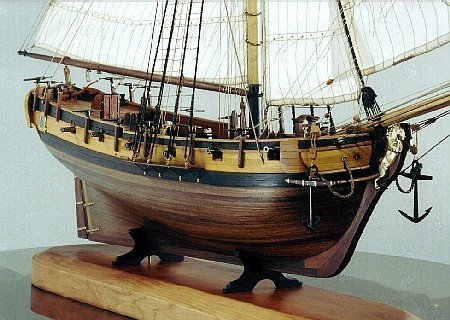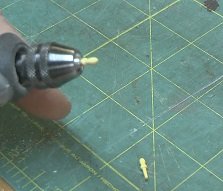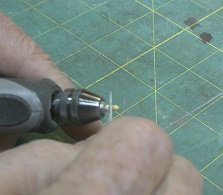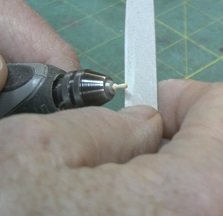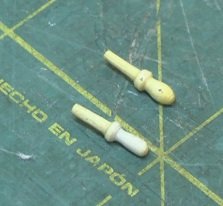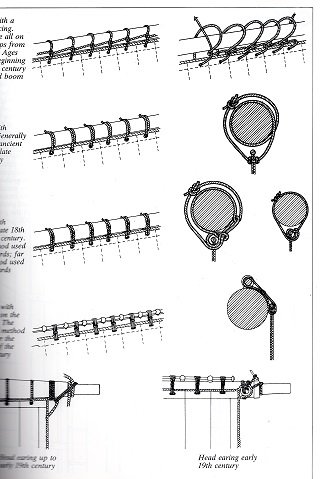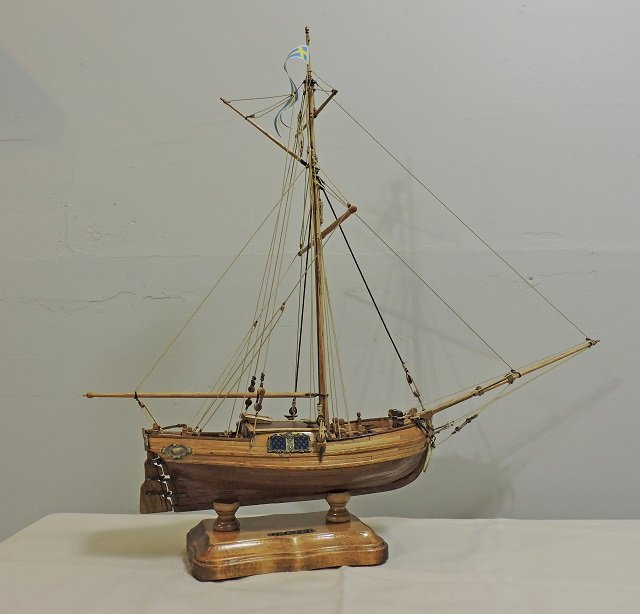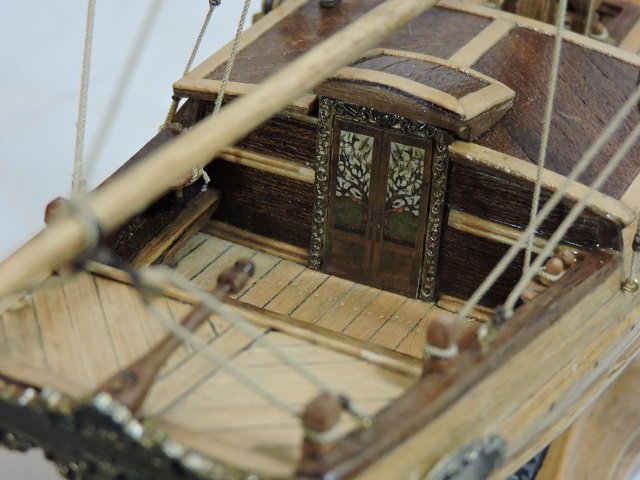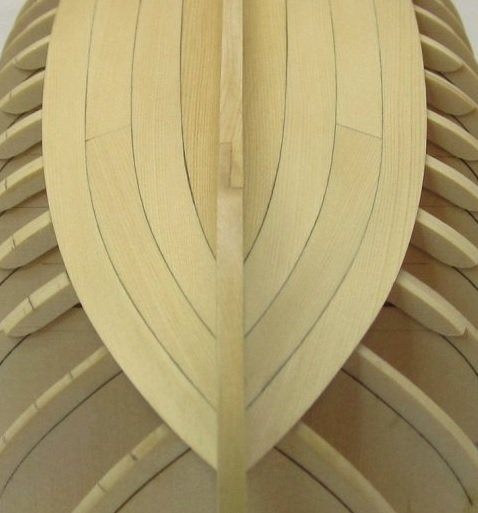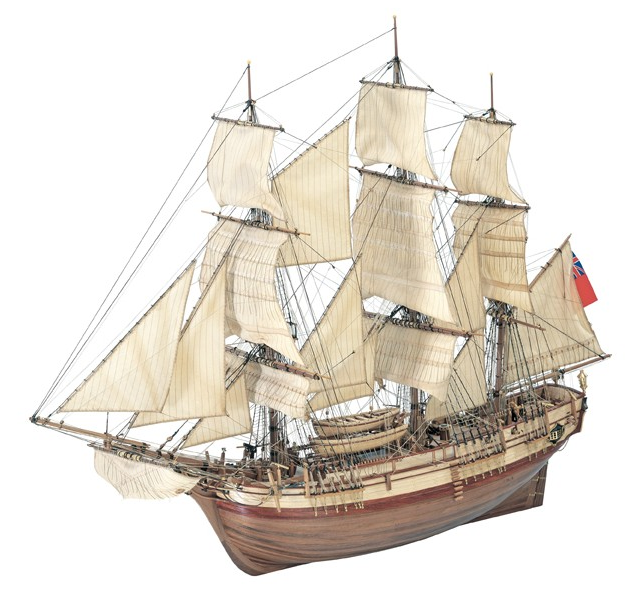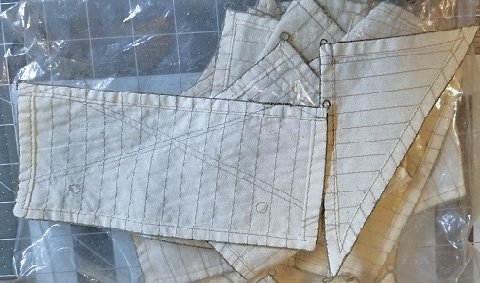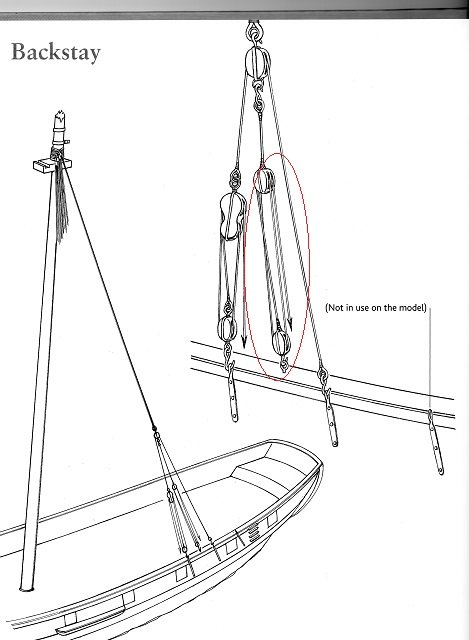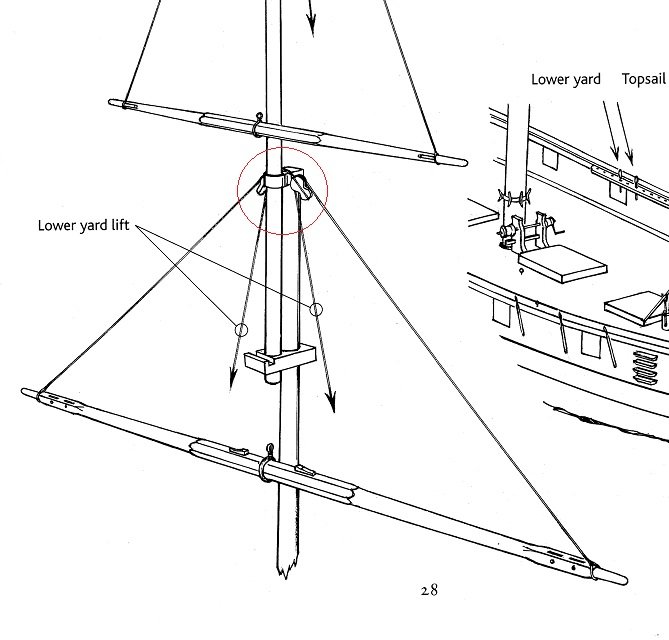-
Posts
3,141 -
Joined
-
Last visited
Content Type
Profiles
Forums
Gallery
Events
Everything posted by Gregory
-
While you have received some great recommendations for other sources, have you considered modifying the one's you have. I have this kit on the shelf and I pulled out the belaying pins. If you have a small rotary tool with an adjustable chuck, it shouldn't be beyond the skill you have demonstrated with this kit.. Started with a fine file, and finished off with an emory board.. This was real quick, and I could have refined the final result a bit.. I would also add a little stain. Here is one I made from a tooth pick using the same method. Might be a bit long for this kit.
-
I really like the base supports.. I'm going to shamelessly rip off that idea...😂
- 51 replies
-
- cheerful
- Syren Ship Model Company
-
(and 1 more)
Tagged with:
-
Was I ever wrong.. In Zu Mondfeld's Historic Ship Models, there is a chapter on " Bending Sails to the yards...
-
I guess it depends on whether or not you feel compelled to adhere to that tagline.. Getting paint colors " historically accurate " is not very likely, but if you want to settle for " some shade of red " , then that is up to you.. Personally, my goal in ship modeling, is to end up with an " art " piece, that aunt May, Uncle Jack or myself would be happy with on the mantle. I accomplish that with the natural wood look. There are countless examples of unpainted models in the Gallery that are far better than what I could hope to achieve.. One of my favorites is Longridge's Victory Model..
-
I was surprised that I couldn't find any details in Zu Mondfeld regarding fixing sails to yards...
-
Not an easy task, without a picture or two showing access to the hold... My best guess for a start, is a piece of small gauge wire, that is fairly rigid..
-
Warped frames
Gregory replied to jdbondy's topic in Building, Framing, Planking and plating a ships hull and deck
( Can't resist.. ) Where did you get that boxwood, that you can afford to use where it will never be seen ? -
I found this listing on ebay.. I see quite a few eyebolts.. Connie Parts PS If I remember correctly, the gun deck calls for a ton of those eyebolts. 99% Of them will not be visible on the finished model.. However it's been a while and I might be confusing the gun deck with the spar deck, where they are quite visible..
-
It could be accomplished with a straight plank and bending, but would be more challenging.. What you see is the result of spiling... laid out flat it would look more like this example.. Found in this article, mentioned earlier.. SIMPLE HULL PLANKING TECHNIQUES FOR BEGINNERS You might achieve the same result with some bending techniques involving soaking, clamping and heating..
-
I don't know if this will need further explanation, however when I lay out the garboard ( and other planks as well ) I place a piece of masking tape along the keel, from the stern to the bow. For most of the run, the edge will follow the keel. Where it meets the curve of the bow, I mark it with a pen, then use this as a guide for cutting the plank. Of course, the plank can be tapered and meet the keel further back,. The final shape is up to the builder and the desired result.
-
Going through may stash and uncovered a complete set of OEM sails for the Artesania Latina 1:48 Bounty. These are also for the " exposed " kits, and will possibly work for any 1:48 similarly rigged ship. I am willing to donate these to anyone who will pay postage and assure me they will be used on a model. I look forward to seeing them on a completed ship.. P.S. Trivia regarding the old MSW site: Does anyone remember the " Moldy " Bounties?
-
Make note! The spru has several sizes, and there are only ten of the smallest size...
- 714 replies
-
- lady nelson
- victory models
-
(and 1 more)
Tagged with:
-
This showed up in another discussion.. Eyebolt No Collar Might be what you need for making smaller hooks.
- 714 replies
-
- lady nelson
- victory models
-
(and 1 more)
Tagged with:
-
I just eyeball the opening and go from there. The drill bit idea sounds good for getting a little more precision. I burred up the edges of the chuck teeth a little bit with a cut off wheel. It doesn't take much to turn it into a rough cutting tool. I used to do this with various size colletts before I discovered the chuck.
-
Just curious.. Could you humor us with some context? In the image below, is the smallest eyebolt I have in my collection at about 1mm ID.. The red dot is about .25mm .. It is barely visible when printed and smaller than most of the thread I own. P.S. I certainly admire the effort that requires anything at this scale.. It is way off of my radar..
-
Thanks for sharing.. I was really impressed by by the precision of your parts, and was waiting for you to tell me you have a laser cutter.. Now I'm even more impressed! P.S. Regarding rounding off small square stock. You have made a very nice tool, however, I have found that a Dremel keyless chuck does a pretty good job, and gives you a fairly wide range on a small scale.. It's also good for further reducing round stock.
-
Hey Phil, Nice build you have going here. Just curious how you fabricate your wood parts, such as your gun carriages?
-
I've pointed out more than once that Petterson makes no claims about technical accuracy, and that he is documenting specific models. The objections here, come from discussions where someone asks for rigging references and Petterson gets thrown in with with Lees, and etc.. The distinction is important. I love Petterson's books. Particularly the first one. I go to them all the time. They are very good for showing how 99% of the lines run.. Particularly on the three mast ship..
-
I don't want to spend too much time bashing the book, but hope to address questions that have been asked.. Frankie may want to add more, but here is my $ .02 on the cutter. ( ...which is a favorite subject of mine for modeling, because of it's simplicity.) Being a relatively simple rig, it is hard to mess up, but one should be careful with kit plans, because they tend to oversimplify, which can be seen when you compare them to more detailed resources. Petersson apparently documented what he found on one model without comparing to other sources. Here are two items I question from the book, and maybe someone else can correct me if I am wrong. I don't understand the purpose of the tackle circled in red. It appears redundant if not totally unnecessary . It could conceivably be used to tension the back stay while setting up the other tackle that is seen, but I can't find this set-up anywhere else. It just jumped out at me when I was doing research for a couple of kits I am looking at. I don't see it in the contemporary model found here: There are several other cutter models in the Gallery, and I don't see that tackle on any of them. ....Or in the plans for Chuck's Cheerful, that can be found here: Chapter 14.. Chuck is not the final word, but I know he researched his Cheerful very thoroughly, and I would feel comfortable rigging any similar cutter with his plans. Here's No. 2: What's up with those fiddle blocks? There are not any lines going through the lower sheave. Regardless, I don't think you will find such blocks as part of a yard lift tackle on any ship. Some may say these are no big deal, but it certainly disqualifies this book as a go-to, much less a final source for accurate information on a similar boat. As I mentioned, these are two problems that jumped out at me as I compared it to other sources. I don't want to spend a lot of my time, analyzing this book for other errors, but I must assume they are there, and will double check anything I find myself looking at for future reference. Of course, someone more knowledgeable than me, might look at what I have posted and inform me about how wrong I am. I will certainly welcome any criticism. Gregory
About us
Modelshipworld - Advancing Ship Modeling through Research
SSL Secured
Your security is important for us so this Website is SSL-Secured
NRG Mailing Address
Nautical Research Guild
237 South Lincoln Street
Westmont IL, 60559-1917
Model Ship World ® and the MSW logo are Registered Trademarks, and belong to the Nautical Research Guild (United States Patent and Trademark Office: No. 6,929,264 & No. 6,929,274, registered Dec. 20, 2022)
Helpful Links
About the NRG
If you enjoy building ship models that are historically accurate as well as beautiful, then The Nautical Research Guild (NRG) is just right for you.
The Guild is a non-profit educational organization whose mission is to “Advance Ship Modeling Through Research”. We provide support to our members in their efforts to raise the quality of their model ships.
The Nautical Research Guild has published our world-renowned quarterly magazine, The Nautical Research Journal, since 1955. The pages of the Journal are full of articles by accomplished ship modelers who show you how they create those exquisite details on their models, and by maritime historians who show you the correct details to build. The Journal is available in both print and digital editions. Go to the NRG web site (www.thenrg.org) to download a complimentary digital copy of the Journal. The NRG also publishes plan sets, books and compilations of back issues of the Journal and the former Ships in Scale and Model Ship Builder magazines.

